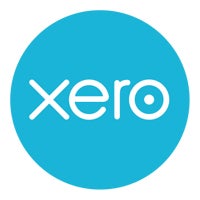Popular network monitoring tools Nagios and Zabbix feature a variety of capabilities. See how Nagios and Zabbix compare.

Nagios and Zabbix are among the most sought-after IT solutions deployed by organizations to monitor large enterprise networks. Here’s a look at what each of these network monitoring tools offers in terms of key features and performance.
SEE: Hiring Kit: Network Engineer (TechRepublic Premium)
What is Nagios?
Nagios is one of the best network monitoring tools available for most computer systems. It provides multiple alert levels to help make sure you are never caught off guard by unplanned downtime. The alerts include Warning, OK, Critical, Unknown and Pending.
Nagios is ideal software that organizations can rely on to analyze bandwidth and monitor network hurdles arising from data link overload or problematic network connections. Nagios requires you to configure the interface via text files or employ plugins. The monitoring software offers to alert services for servers, switches and applications and it’s designed to aid in solutions such as:
- Windows monitoring
- Linux monitoring
- Server monitoring
- Application monitoring
- SNMP monitoring
- Log monitoring
Nagios easily counterchecks parameters such as disk usage, memory usage, microprocessor load, Post Office Protocol 3 (POP3), Simple Mail Transfer Protocol (SMTP) and Hypertext Transfer Protocol (HTP). Its services have built-in core agents to allow management of services. These agents include:
- Nagios Remote Plugin Executor for remote monitoring
- Nagios Remote Data Processor for data transport
- NSClient++ to monitor Windows devices
- Nagios Cross-Platform Agent to aid in monitoring data feed on Windows, Linux, and Mac
Pros of Nagios
- Nagios automatically alerts the technical team when an issue arises.
- The tool monitors all main service protocols: HTTP, FTP, SNMP, POP3, SSH, etc.
Cons of Nagios
- Nagios requires payment to access premium versions. Nagios XI upgrade starts at $1,995.
What is Zabbix?
Zabbix is a network monitoring tool that allows an organization to collect, transform, analyze and visualize data. The formidable tool is easily integrated with IoT, ticketing and IT service management (ITSM) systems. With over 80,000 members in its support community, Zabbix offers a wide range of monitoring templates to eliminate manual configuration.
This IT monitoring solution can handle numerous concurrent devices, where system specs can be relayed easily from a system resource perspective. This is facilitated by the integration of SNMP and intelligent platform management interface (IPMI) agents. The open source network monitoring software runs in the background to extend its capabilities in:
- Network performance monitoring
- Server monitoring
- Cloud monitoring
- Application monitoring
- Service monitoring
Zabbix can uniquely monitor databases, cloud services, virtual machines and applications. The program allows change in configurations through the web-based interface.
Pros of Zabbix
- You can customize the Zabbix dashboard according to what you want to monitor.
- Zabbix is a completely free open source network monitoring solution.
Cons of Zabbix
- Zabbix lacks the functionality to inform the technical team if there’s an issue.
SEE: 5 programming languages network architects should learn (free PDF) (TechRepublic)
How do Nagios and Zabbix compare?
Nagios vs. Zabbix: key differences
The key difference between the two programs is the ability to send alerts and alarms when problems arise. Unlike Nagios, Zabbix lacks functionality elements that can be used to send an alert in case of an system issue. In contrast, Nagios integrates a valuable feature that sends alerts to the technical team about a problem.
Nagios comes in both free and premium versions. Free versions have limited features, whereas the premium version requires additional payment. On the other hand, the Zabbix tool is easy to install and doesn’t require additional installation payment.
Nagios is a continuous monitoring tool that runs periodic checks to test the system’s performance and raise an alert for any issue noted, whereas Zabbix is a type of monitoring tool that aids in monitoring the system and its components. Nagios monitors applications, services and systems, whereas Zabbix monitors statistics, memory heap and networking systems.
Zabbix uses graphs and maps to display data, but the Nagios tool lacks such functionality. Zabbix overviews provide statistics about performance data, unlike in the Nagios tool.
The Nagios tool facilitates solving server issues automatically, whereas the Zabbix tool requires manual work to fix any arising bug.
Zabbix integrates one centralized web-based management interface for database monitoring and management. Nagios tool lacks a centralized system to monitor data and the system; rather, it uses the graphical user interface to display web pages.
Nagios vs. Zabbix: main similarities
Nagios and Zabbix are excellent network monitoring tools that deliver a comprehensive view of the connected network. Both programs monitor the network with a perfect blend of simplicity and depth. Both tools monitors server performance and system health.
In addition, both tools can run auto-discovery. Nagios incorporates the NagiosQL plugin to discover devices automatically. On Zabbix, users can configure scan settings as desired.
Should you choose Nagios or Zabbix?
Both Nagios and Zabbix are top network monitoring software; thus, it would be tough to call an outright winner. As with any type of solution, finding the perfect monitoring tool depends on your uses and environment. These two network monitoring options are flexible and customizable to suit varying situations, with functionality and features that can handle overall network monitoring for your specific requirements.
Source of Article



